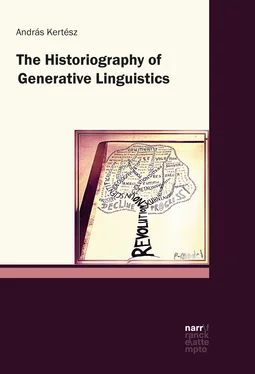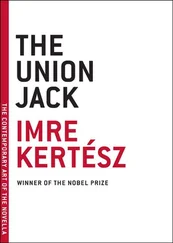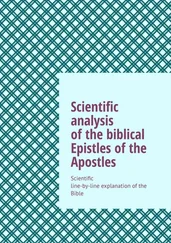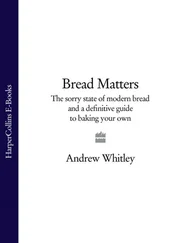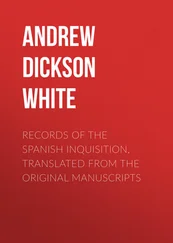1 ...6 7 8 10 11 12 ...23 […] is fundamentally false from beginning to end – because the scholarship is poor, because the texts have not been read, because the arguments have not been understood, because the secondary literature that might have been helpful has been left aside or unread, even when referred to (AarsleffAarsleff, Hans 1970: 583–584; see also KoernerKoerner, E.F. Konrad 1999: 10–12, 178, 210–214).
The second example is that KoernerKoerner, E.F. Konrad (1989: 102, 131; 2004: 37–40) considers NewmeyerNewmeyer, Frederick J.’s work to be ›partisan historiographypartisan historiography‹, too, implying that it gives a one-sided account of the facts while disregarding the methodologymethodology of historiographyhistoriography. Newmeyer (1986a) cites VoegelinVoegelin, C.F.’s review of Syntactic Structures Syntactic Structures (Voegelin 1958) and claims that Voegelin evaluated the appearance of ChomskyChomsky, Noam’s work as a Copernican revolutionrevolutionCopernican. However, as Koerner maintains, the expression cited in Voegelin’s review occurs in a context in which the author evaluates Syntactic Structures negatively (Voegelin 1958: 230; cited in Koerner 1989: 130, 2004: 40).8 That is, Voegelin, in fact, stated the opposite of what Newmeyer attributes to him and therefore, Koerner concludes, Newmeyer’s method is extremely biasedbias historiography.9
The historiographicalhistoriography framework of the above statements is the methodologymethodology that was summarized in KoernerKoerner, E.F. Konrad (1989, 1995, 2002). According to Koerner (1989), historiography must consciously strive for impartiality, objectivity and must avoid ›partisan historiographypartisan historiography‹.10 However, in his later publications he differentiates this stance insofar as since there are no ›facts‹ without background assumptions, preferences might influence the interpretation of datadata. A wide range of documents must be consulted. As opposed to NewmeyerNewmeyer, Frederick J.’s historiography, personal memories and oral narratives cannot be viewed as reliable data resources (see Koerner 2002: 153–7). In accordance with this view, Koerner strongly opposes Newmeyer’s methodology, which exclusively relied on communication with the supporters of generative linguistics and ChomskyChomsky, Noam’s followers (Koerner 2002: 157). A historiographer of linguistics must be familiar not only with the linguistic theorytheory at issue, but, when necessary, give consideration to extra-linguistic factors such as the intellectual, sociologicalsocial, ideologicalideology and political aspects of an issue (Koerner 2002: 155).
We can reconstruct KoernerKoerner, E.F. Konrad’s proposal for the solution of (P) as follows:
| (SP5) |
The basic term associated with the historiographyhistoriography of generative linguistics with respect to Syntactic Structures Syntactic Structures is ›evolution‹evolution; its central hypothesis is (T5) and its framework is the methodologymethodology discussed e.g. in KoernerKoerner, E.F. Konrad (1989), (1995) and (2002). |
2.1.2.2 The impact of the formalformal sciencescienceformals
TomalinTomalin, Marcus (2008) motivates his investigations with the criticism of historiographicalhistoriography approaches to generative linguistics. In his view, they are contradictorycontradiction, with respect to their treatment of the relationship between the ›formalformal sciencescienceformals‹ and generative linguistics. On the one hand – as was emphasized as early as 1957 in LeesLees, Robert’ famous review of Syntactic Structures Syntactic Structures , a review which played a decisive role in the latter’s reception – there is no doubt that generative linguistics has been under the influence of the ›formal sciences‹ from the very beginning. Therefore, it has been claimed that it »was a superior linguistic theorytheory primarily because it was more ›scientificscientific‹ than the syntactic theories that preceded it« (Tomalin 2008: 1; emphasis added). On the other hand, the state of the art in the historiography of generative linguistics does not reveal this relationship properly. Tomalin’s aim is to resolve this contradiction. His thesis – as the title of his book suggests – is the following (Tomalin 2008: 4, 183, 186):
| (T6) |
Syntactic Structures Syntactic Structures originates in the formalformal sciencesscienceformal. |
By ›formalformal sciencescienceformals‹ TomalinTomalin, Marcus means disciplines which take their methods from mathematicsmathematical and formal logiclogic, with special emphasis on the application of the axiomatic-deductivedeductive method. In this respect, they rest on a common scientificscientific basis (Tomalin 2008: 2–3). Tomalin investigates the development of generative linguistics up to 1957, the publication year of Syntactic Structures Syntactic Structures , focusing on the impact of the ›formal sciences‹ on generative linguistics. Tomalin supports his central claim – i.e. (T6) – with two complementary lines of reasoning.
Within his first line of reasoning, he carries out precise comparative analyses of the mathematicalmathematical and logicallogic literature of the first half of the twentieth century, the literature of BloomfieldianBloomfieldian and neo-Bloomfieldianneo-Bloomfieldian structuralismstructuralism, and ChomskyChomsky, Noam’s writings before the publication of Syntactic Structures Syntactic Structures . As a result, he obtains three new findings that support (T6) (see TomalinTomalin, Marcus 2008: 183–186 for their summary). One concerns Bloomfield’s attitude to the formalformal sciencescienceformals. Based on previously unanalyzed documents, he concludes that Bloomfield’s mistrust of semantic considerations was rooted in Hilbert’s proof-theoretical techniques, a key component of which is that in metamathematics semantic considerations should be avoided, while syntactic proofs are to be preferred. Radically diverging from mainstream opinion, Tomalin characterizes Bloomfield as an early (perhaps even the earliest) proponent of the axiomatic-deductivedeductive method in linguistics, and claims he has »rehabilitated« the mathematical aspects of Bloomfield’s linguistics (Tomalin 2008: 184).1 He argues that although post-Bloomfieldian linguistics and the formal sciences of the time took on different tasks, they proceeded in a similar fashion, partly because the methodologies used in both disciplines were influenced by the formal sciences which had prevailed during the first half of the twentieth century.
Still within TomalinTomalin, Marcus’s first line of reasoning, a further finding is the re-evaluation of Bar-Hillel’s role. He ›rehabilitates‹ Bar-Hillel, too, by pointing out the close and continuous interplay between ChomskyChomsky, Noam’s and Bar-Hillel’s views, something which has so far been neglected in the historiographicalhistoriography literature.
Finally, TomalinTomalin, Marcus reaches similar conclusions with respect to GoodmanGoodman, Nelson’s and Quine’s influence on ChomskyChomsky, Noam, which proved to be much more complex and effective than the historiographicalhistoriography literature has assumed (see also Tomalin 2003). For example, the way Chomsky made use of the criterion of simplicitysimplicity in his early writings was a result of Goodman’s influence.
TomalinTomalin, Marcus’s second line of reasoning focuses on the claim that those components of generative grammargrammar which are rooted in the formalformal sciencescienceformals have remained constant through the whole historyhistory of generative linguistics and are still present in the Minimalist ProgramMinimalist Program (Tomalin 2008: 188–200). He concludes that despite the seemingly different nature of the developmental stages of generative linguistics, a significant proportion of its constitutive features remained spectacularly constant and are rooted in the impact of the formal sciences on generativism. One such constant component is the axiomatic-deductivedeductive character of ChomskyChomsky, Noam’s theorytheory.2 For example, derivations in the Minimalist Program start with primitive elements such as lexical and formal features and result in phonological form and logicallogic form pairings (Tomalin 2008: 188). Another example is that, as is well known, recursion is one of the pillars of minimalismminimalism. Finally, ›economyeconomy‹ (›simplicitysimplicity‹, ›eleganceelegance‹, ›compactnesscompactness‹) is a crucial aspect of minimalism, closely related to GoodmanGoodman, Nelson’s influence. By highlighting these constant components, Tomalin seems to suggest that the ›scientificscientific superiority‹ of generative linguistics remained the same throughout its history, despite other kinds of changes in the theoretical apparatus.3
Читать дальше
